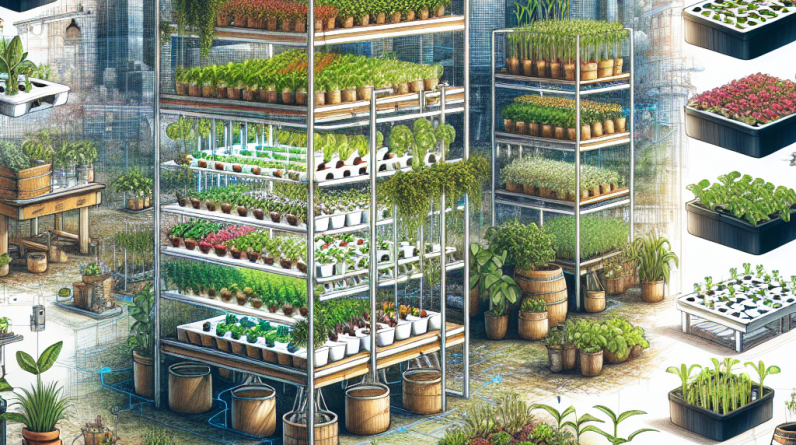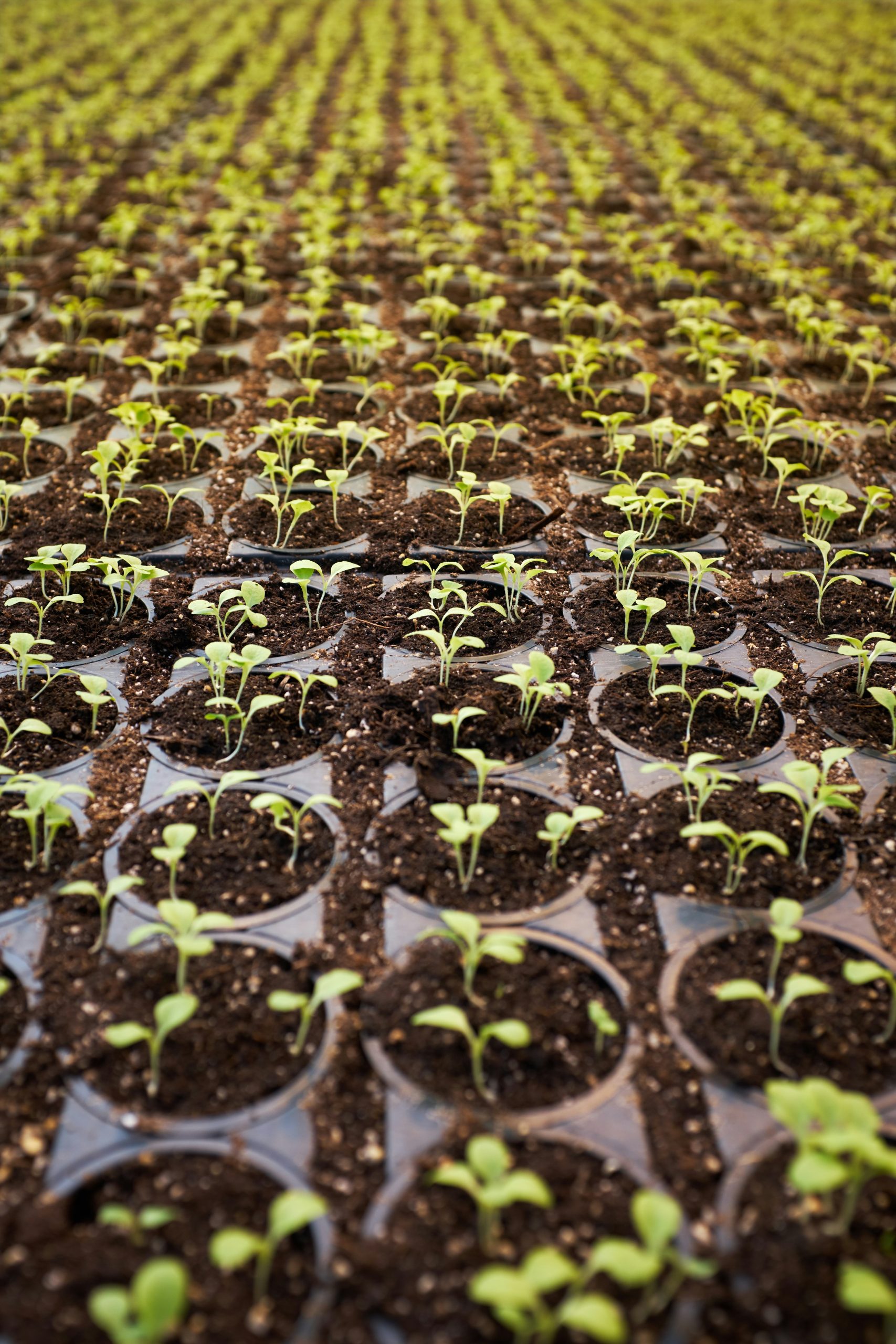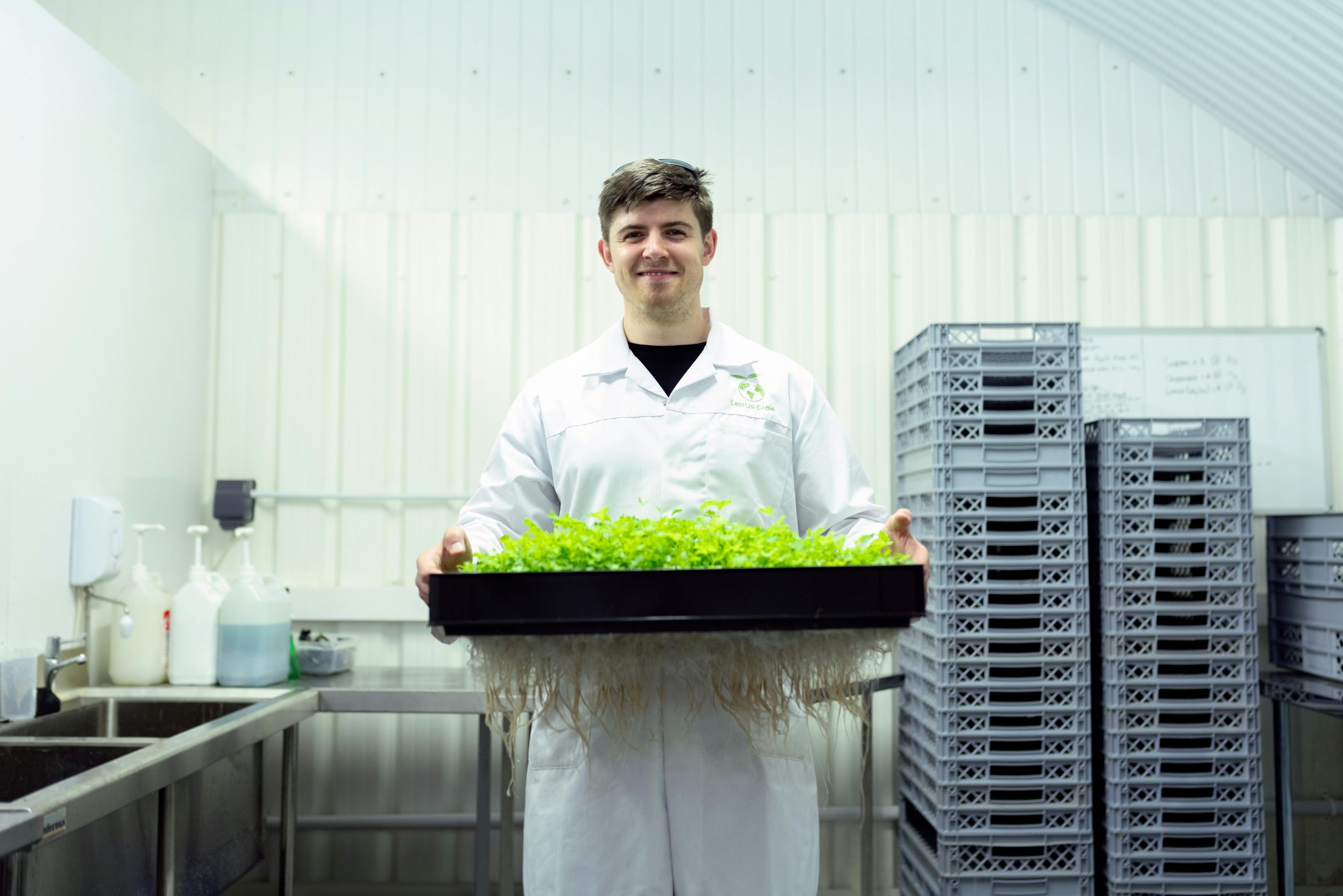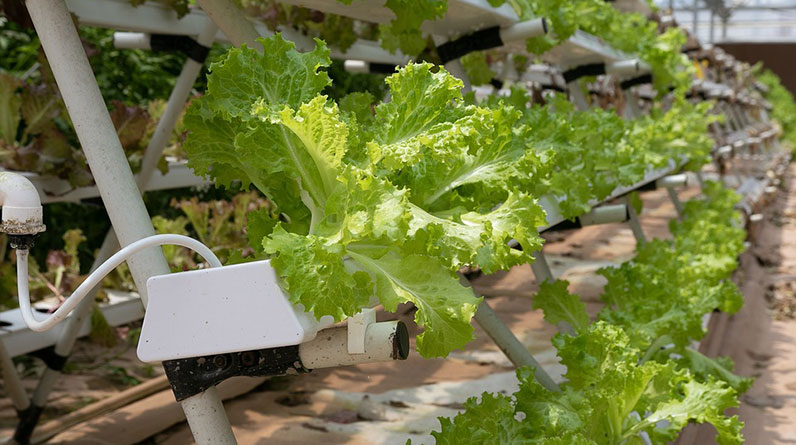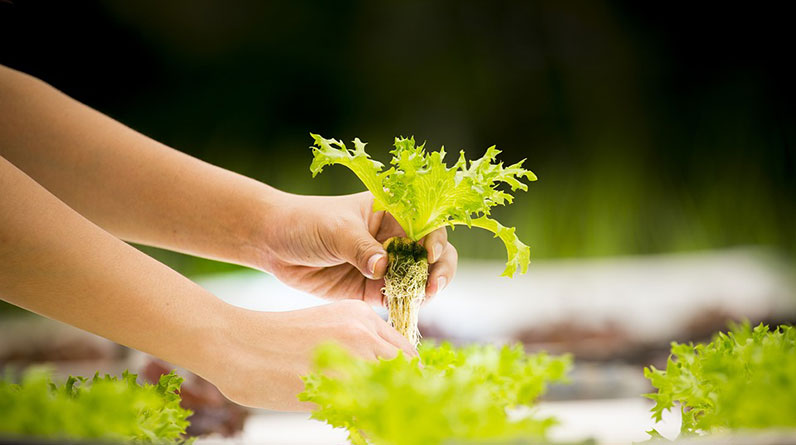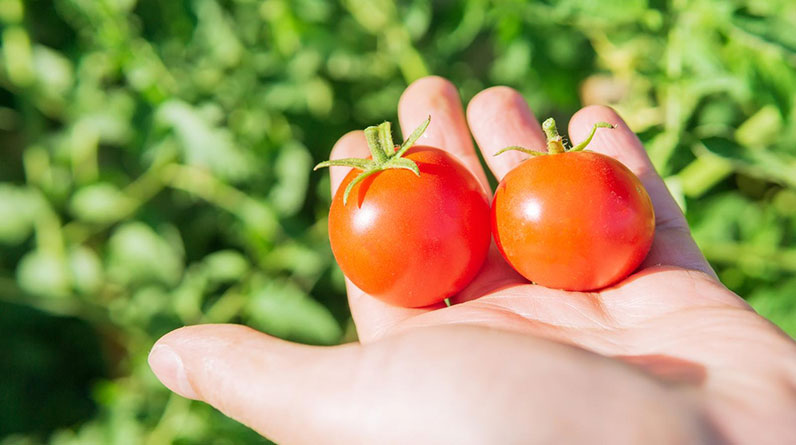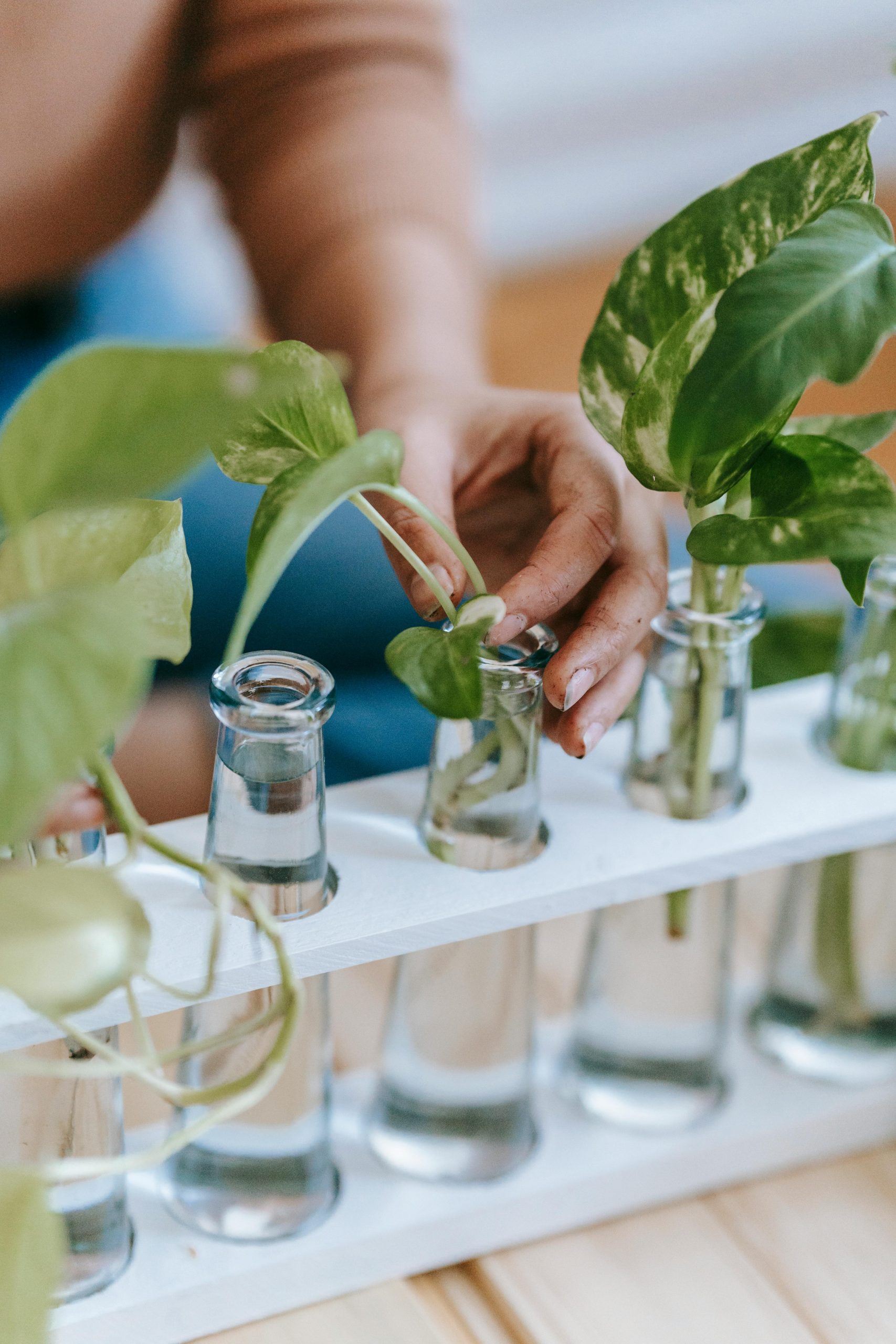
Table of Contents
- 1. Choose the Right Hydroponic System
- 2. Select the Best Growing Medium
- 3. Optimize Lighting Conditions
- 4. Maintain Proper pH and Nutrient Levels
- 5. Control Temperature and Humidity
- 6. Implement Good Air Circulation
- 7. Select Compatible Plants for Hydroponic Growing at Home
- 8. Monitor and Troubleshoot Common Issues
- 9. Use Technology for Automation and Monitoring
- 10. Keep Learning and Adapting Your Hydroponic Setup
1. Choose the Right Hydroponic System
Types of Hydroponic Systems
When starting with hydroponic growing at home, selecting the appropriate system is crucial. Popular options include Nutrient Film Technique (NFT), Deep Water Culture (DWC), and Flood and Drain (Ebb and Flow). Each has its advantages, depending on your space, budget, and plant types.
For instance, DWC systems are favored for their simplicity and rapid growth rates, making them ideal for beginners. NFT systems are suitable for growing leafy greens and herbs, providing a continuous flow of nutrients. Understanding these options helps you tailor your setup for 2025 trends and technology advances.
A well-chosen system enhances yield and reduces maintenance, ensuring a successful hydroponic growing at home experience. Researching these types ensures your setup fits your needs perfectly.
Design Considerations
Optimizing your hydroponic system design involves considering space, accessibility, and scalability. For small indoor setups, vertical systems save space, while larger setups can benefit from horizontal arrangements.
Lighting, nutrient delivery, and easy access for planting and harvesting are critical design factors. In 2025, compact, modular systems with smart features are trending, making hydroponic growing at home more accessible than ever.
Investing in a modular design allows you to expand or modify your system as your skills grow. Proper design ultimately leads to greater success and enjoyment in your hydroponic journey.
2. Select the Best Growing Medium
Popular Growing Media
The choice of growing medium impacts plant health and nutrient absorption in hydroponic growing at home. Common media include coco coir, perlite, rockwool, and clay pellets. Each offers specific benefits like moisture retention or aeration.
For beginners, coco coir and clay pellets are user-friendly options that support strong root development. Rockwool provides excellent water retention but requires careful handling due to its fibrous nature.
In 2025, sustainable and biodegradable media are gaining popularity, aligning with eco-conscious gardening trends. Selecting the right medium ensures your plants thrive and simplifies maintenance.
Choosing the Right Medium for Different Crops
Different plants have varying requirements, influencing your choice of medium. Leafy greens and herbs thrive in well-drained media like perlite or coco coir, while fruiting plants may benefit from heavier media like clay pellets.
Matching the medium with your crop’s needs enhances yields and reduces issues such as root rot or nutrient deficiencies. Experimenting with different media in your hydroponic growing at home setup can optimize performance for 2025 gardening goals.
Always consider availability, cost, and sustainability when selecting your media, ensuring a balanced approach to hydroponic gardening.
3. Optimize Lighting Conditions
Lighting Types and Their Effectiveness
Proper lighting is vital for successful hydroponic growing at home. LED grow lights are the preferred choice in 2025 due to their efficiency, spectrum customization, and energy savings. Full-spectrum LEDs mimic natural sunlight, supporting healthy plant development.
For optimal growth, LEDs should provide 16-18 hours of light per day, depending on the plant species. Keep in mind that the intensity and distance from the plants affect growth rates and quality.
Natural light can supplement indoor setups, but in most cases, artificial lighting is essential for year-round gardening. Investing in quality lighting accelerates growth and increases yields.
Scheduling and Light Spectrum Tips
Implementing a consistent lighting schedule, such as using timers, ensures plants receive adequate light and dark periods, essential for healthy growth. Adjusting the spectrumâfor example, more blue light during vegetative stages and red during floweringâaligns with plant needs.
In 2025, smart lighting systems with remote control and automation features are becoming standard, making hydroponic growing at home more manageable and efficient.
Monitoring light levels with lux meters helps you fine-tune your setup for maximum productivity, especially in limited indoor spaces.
4. Maintain Proper pH and Nutrient Levels
Essential pH and Nutrient Ranges
Maintaining the correct pHâtypically between 5.5 and 6.5âis critical for nutrient availability in hydroponic growing at home. Deviations can lead to deficiencies or toxicities that hinder plant growth.
Nutrient solutions should contain nitrogen, phosphorus, potassium, and trace minerals. In 2025, ready-made hydroponic nutrients with balanced formulas simplify this task.
Regular testing with pH meters and EC (electrical conductivity) meters allows precise adjustments, ensuring optimal nutrient uptake and healthy plants.
Tools and Techniques for Monitoring
Using digital testing tools makes maintaining proper levels easier. Automated systems equipped with sensors can alert you to imbalances, enabling prompt corrections. This automation exemplifies how technology enhances hydroponic growing at home in 2025.
Consistent monitoring minimizes issues like nutrient lockout or deficiencies, leading to more predictable and abundant harvests.
Establishing a routine for testing and adjusting pH and nutrients is the foundation of successful hydroponic gardening.
5. Control Temperature and Humidity
Ideal Climate Conditions
For hydroponic growing at home, maintaining temperature between 65°F to 78°F (18°C to 26°C) and humidity levels around 50-70% promotes healthy root and plant development. In 2025, climate control technology makes maintaining these conditions easier.
Too high temperatures can cause root rot, while low temperatures slow growth. Dehumidifiers and heaters assist in creating a stable environment.
Investing in small climate control units ensures your setup is resilient against outdoor temperature fluctuations, especially in unpredictable weather patterns of 2025.
Energy Efficiency Tips
Energy-efficient heaters and coolers, combined with smart thermostats, optimize energy use while maintaining ideal conditions. This approach reduces operational costs and environmental impact, aligning with sustainable gardening practices.
Ventilation systems and exhaust fans help control humidity levels and prevent mold or fungal issues.
Consistent climate management directly impacts crop yield quality in your hydroponic growing at home setup.
6. Implement Good Air Circulation
Benefits of Air Movement
Good air circulation prevents mold, reduces pests, and strengthens plant stemsâa vital aspect of hydroponic growing at home. Proper airflow ensures your plants get enough CO2 for photosynthesis.
Using oscillating fans and exhaust systems can help mimic outdoor breeze, promoting healthy growth and preventing stagnation in your indoor setup.
In 2025, smart fans with adjustable speed and timers integrate seamlessly into automated hydroponic systems.
Placement and Fan Setup Tips
Position fans to create gentle, consistent airflow without directly blasting the plants. This avoids stress on delicate foliage while providing the airflow benefits.
Ensure unobstructed circulation across the entire grow areaâespecially in vertical or confined spaces.
Proper air movement in your hydroponic growing at home leads to healthier plants and higher yields.
7. Select Compatible Plants for Hydroponic Growing at Home
Best Plants for Indoor Hydroponics
Many plants thrive in hydroponic systems, especially in 2025, including lettuce, spinach, herbs like basil and mint, and small fruiting plants like cherry tomatoes and peppers. These are ideal for beginners.
Choosing easy-to-grow varieties ensures quick success and boosts confidence in your hydroponic growing at home journey.
Experimenting with different crops can also diversify your harvest, making indoor gardening more rewarding and sustainable.
Consider Space and Growth Cycles
Assess your available space and select plants that fit comfortably. Fast-growing plants reduce wait times and help you learn faster. For instance, leafy greens have short cycles, making them perfect for indoor hydroponics in 2025.
Adjust your plant choices seasonally or as your setup improves, gradually taking on more challenging crops. Flexibility enhances your hydroponic success rate.
Keeping a planting schedule helps manage crop rotation and maximize yields in your home hydroponic garden.
8. Monitor and Troubleshoot Common Issues
Identifying Problems Early
Monitoring your hydroponic system regularly helps catch issues like nutrient deficiencies, pH imbalance, pests, or root rot early. In 2025, digital monitoring tools make this process easier and more precise.
Signs such as yellowing leaves, stunted growth, or mold should prompt immediate investigation. Using a combination of visual checks and sensor data improves troubleshooting accuracy.
Creating a troubleshooting checklist ensures quick responses, minimizing crop loss and maintaining healthy hydroponic growing at home.
Solutions and Preventative Measures
Implement preventative steps such as sterilizing equipment, maintaining proper environment control, and using organic pest deterrents. These practices reduce future problems and promote plant vitality.
Adjust nutrient solutions, pH levels, and environmental conditions based on feedback from your monitoring tools to optimize conditions.
Staying proactive in troubleshooting results in a more efficient, productive hydroponic system, benefiting your overall gardening success.
9. Use Technology for Automation and Monitoring
Smart Devices and Apps
In 2025, automation plays a key role in hydroponic growing at home. Smart controllers, sensors, and mobile apps allow you to track and adjust environmental conditions remotely.
Set schedules for lighting, watering, and climate control. Receive alerts if parameters deviate from optimal ranges, enabling quick correction.
This technology reduces manual labor and increases precision, leading to higher yields and consistent qualityâa game-changer for home gardeners.
Data-Driven Gardening
Leveraging data from sensors helps you understand plant needs better. Tracking nutrient levels, pH, temperature, and humidity informs decisions for future cycles.
Analysis over time uncovers patterns, optimizing your hydroponic growing at home for peak productivity in 2025 and beyond.
Adopting these tools makes hydroponic gardening more accessible, efficient, and scientifically guided, ensuring success for beginners and experienced growers alike.
10. Keep Learning and Adapting Your Hydroponic Setup
Stay Informed with Latest Trends
The hydroponic industry evolves rapidly. Regularly reading blogs, joining online communities, and attending webinars ensures you stay updated on the latest techniques and equipment innovations in 2025.
Learning from others’ experiences can help you refine your setup and troubleshoot common problems effectively.
Continuously experimenting and adapting your hydroponic growing at home makes the process more enjoyable and productive.
Document Your Progress and Experiment
Keeping a gardening journal helps track what works and what doesnât. Note plant varieties, nutrient schedules, and environmental conditions.
Over time, this data allows you to make data-informed decisions, improving yields and reducing waste.
Embracing a mindset of learning and adaptation is key to mastering hydroponic growing at home in 2025.
Frequently Asked Questions (FAQs)
Q1: What is the best hydroponic system for beginners?
The Deep Water Culture (DWC) system is often recommended for beginners due to its simplicity and quick results. It requires minimal setup and is easy to maintain.
Q2: How often should I check my hydroponic system?
Itâs best to check your system daily. Monitor pH, nutrient levels, and plant health. Regular inspection helps detect issues early and keeps your hydroponic growing at home on track.
Q3: Can I grow herbs hydroponically at home in 2025?
Absolutely! Herbs like basil, mint, cilantro, and parsley are perfect for hydroponic growing at home. They grow quickly and are perfect for culinary use.
Q4: How do I troubleshoot common problems in hydroponic gardens?
Start by monitoring environmental conditions and nutrient levels. Look for signs of pests or disease, and adjust pH or nutrient solutions accordingly. Using sensors and automation tools in 2025 simplifies troubleshooting.
Q5: Why is hydroponic growing at home becoming more popular in 2025?
Advances in technology, sustainability concerns, and limited outdoor space make hydroponic growing at home a practical and efficient option. It allows year-round cultivation with minimal space and water use.
Conclusion
In 2025, mastering hydroponic growing at home requires understanding the essential tips outlined in this guide. From selecting the right system to leveraging the latest technology, each step enhances your chances of success. As you implement these 10 effective tips, youâll enjoy fresh, healthy produce all year round and contribute to a more sustainable lifestyle. Remember, continuous learning and adaptation are vital â so stay curious and experiment frequently. Happy hydroponic growing in 2025!


